Are you ready to grill the perfect tri-tip steak? Well, you’re in the right place! Figuring out the tri-tip temp for that ideal doneness can be like solving a tasty puzzle, but don’t worry—I’ve got your back.
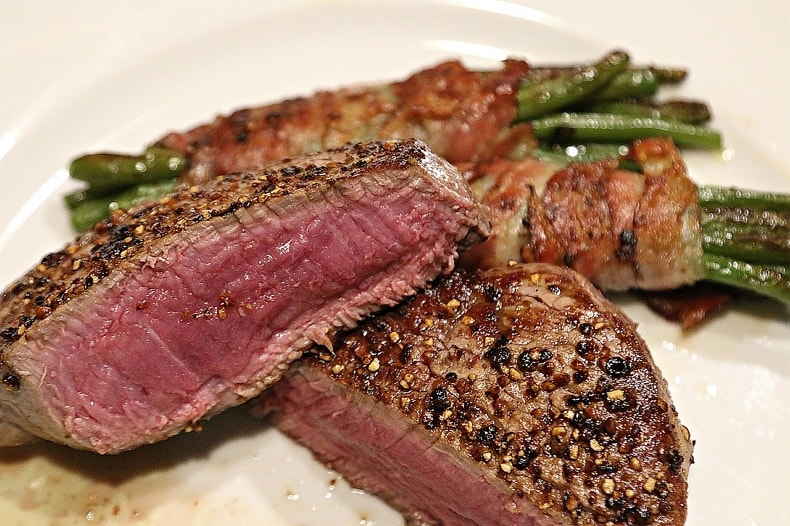
When it comes to the tri-tip internal temp, it all depends on how you like your steak. Do you prefer it rare, medium rare, or even well done? We’ll break down the perfect temperatures for each and everything you need to know about tri-tip temp, from what it is to how to achieve that elusive, mouthwatering, medium-rare perfection.
To help you remove the guesswork of meat temperature, I’ll introduce you to a handy tool: the Typhur InstaProbe meat thermometer. It’s like having a grilling buddy right by your side.
Grab your apron and your meat thermometer, and let’s get started!
In this post, you’ll learn:
What is Tri-tip Steak?
Originally called a California cut, the tri-tip steak has surged in popularity due to its exceptional flavor. This steak, often referred to as the triangle steak due to its triangular shape, is a delicious cut of beef from the cow’s bottom sirloin.
It is an economical choice for meat lovers without compromising on taste, making it a more budget-friendly alternative to equally savory steaks like the rib-eye.
These boneless tri-tip steaks typically measure around 1 inch in thickness, and showcase remarkable marbling, with fat veins running through the meat, ensuring tenderness, provided it’s not overcooked.
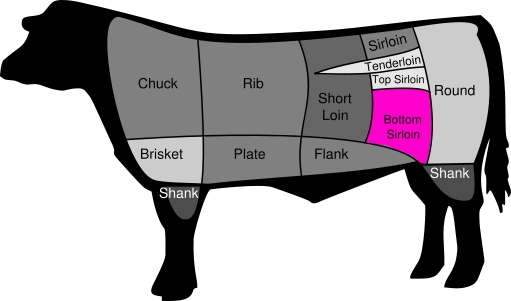
What Is the Best Tri-Tip Temp When Done?
When cooking a tri-tip, getting the tri-tip temperature right is essential. The perfect temperature often depends on how you like your steak. Some folks prefer it tri-tip medium rare temp, which means it’s cooked to an internal temperature of about 130-135°F (54-57°C). It’s tender, juicy, and full of flavor.
So, what is the best temp for tri tip? Here’s the deal for that ideal medium rare tri-tip: slow-cook it at about 200°F (104°C). This is the key temperature for the tri-tip. Once you hit the medium rare tri-tip temp you desire, give it a quick grill sear for that extra flavor punch.
Tri-Tip Temp Cooking Chart
Now that you’re best pals with your tri-tip let’s talk about the juicy stuff—literally! The best temp for tri tip depends on your taste and how you like your steak.
As I mentioned before, a tri-tip is a steak-like cut with very little connective tissue, and that means it should be cooked to the same doneness as a steak.
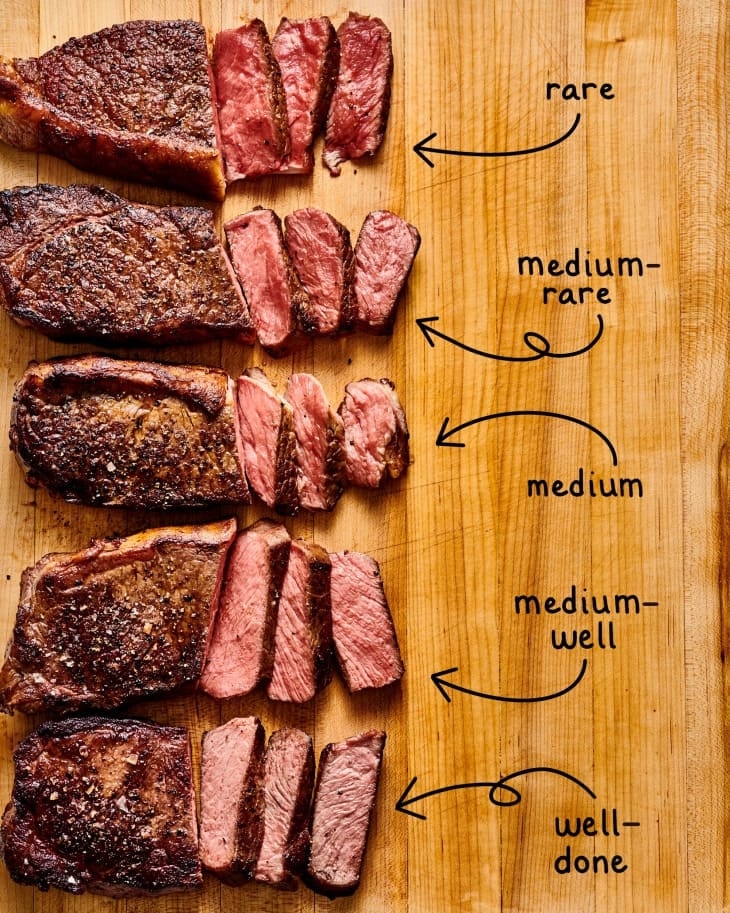
Here’s a quick rundown of the different levels of doneness and their corresponding temperatures:
Rare Tri-Tip Temp: If you’re into a rare steak, you’re looking at an internal temperature of about 125-130°F (52-54°C). It’s got a deep red center and is incredibly tender, with oodles of juices. You’re one step away from having it raw!
Medium Rare Tri-Tip Temp: Most tri-tip enthusiasts swear by medium rare, and for good reason. This level of doneness hits an internal temperature of 131-140°F (55-60°C). It’s the sweet spot—the perfect balance of tenderness and flavor.
Medium Tri-Tip Temp: If you’re leaning toward a slightly more cooked steak, aim for medium tri tip temp, which lands at an internal temperature of 141-150°F (61-65°C). It has a pink center and is just a tad less juicy than medium rare—a safe bet for those looking for a little less pink.
Medium Well Tri-Tip Temp: If you’re inching toward well-done territory, medium well clocks in at 151-160°F (66-71°C). There’s still a hint of pink in the center, but it’s less juicy than the previous levels, like the middle ground between medium and well done.
Well Done: For those who want their steak well done, crank up the heat until you hit 161-165°F (72-74°C) or higher. It’s fully cooked with zero pink and has a firmer texture. You won’t find any mooing here.
So, according to the United States Department of Agriculture (USDA), when you think about what cooked tri-tip temp, they recommend a minimum internal temperature of 145°F (approximately 63°C) for cooking beef, including tri-tip. When you cook your tri-tip to this minimum temperature, it helps kill any harmful bacteria or pathogens that may be present in the meat, making it safe to eat.
How to Check the Tri-Tip Internal Temp?
Here comes the moment of truth—how to ensure your tri-tip hits that perfect internal temperature. It’s all about having the right tool for the job, and in this case, that tool is a trusty meat thermometer like the Typhur InstaProbe.

Instant Read Meat Thermometer
It offers many advantages, with its primary benefit being ensuring that you never consume undercooked food, eliminating any uncertainty about food safety. This instant-read thermometer has also proven invaluable in preventing the overcooking of dishes, sparing you from the disappointment of dry chicken or other overdone meals.
Key features of the Typhur InstaProbe include:

- 0.5s reading speed and ±0.5°F cccuracy. Industry-leading full reading, DCTi thermometer for highly accurate.
- NIST-certified at ±0.5℉ with 7 temp calibrations for any cooking situation.
- World’s first to combine certified-IP67 waterproof and built-in magnets design
- 360° Display Rotation: ensuring you can easily read the temperature from any angle or position.
Think of it as your grilling sidekick, always there to guide you to steak nirvana.
Instructions:
- Preparation: Start by preparing your tri-tip roast for cooking. You can marinate it or season it according to your preference. Ensure that the roast is at room temperature before you start cooking.
- Cooking Method: You can grill, roast, or cook the tri-tip using your preferred method. Make sure to follow your chosen recipe’s cooking time and temperature guidelines.
- Insert the Typhur InstaProbe: As the tri-tip roast approaches its expected cooking time, it’s time to check the internal temperature. Make sure not to contact any bones when inserting the InstaProbe into the thickest area of the tri-tip since this could lead to an erroneous reading.
- Read the Temperature: Wait for the Typhur InstaProbe to stabilize and give you a reading. The temperature should be displayed clearly on the device’s screen. You can choose to display it in either Fahrenheit or Celsius, depending on your preference.
- Check for Doneness: The desired level for a tri-tip roast can vary depending on personal preference or as mentioned above.
- Remove from Heat: Once the Typhur InstaProbe displays your desired internal temperature for the tri-tip, carefully remove the roast from the heat source to prevent overcooking.
- Resting: Allow the tri-tip to rest for a few minutes before slicing. This allows the meat to distribute liquids, producing a more flavorful and juicy finished product.
By using the Typhur InstaProbe to monitor the internal temperature of your tri-tip roast, you can ensure that it reaches the perfect level of doneness to suit your taste preferences, whether you prefer it rare, medium rare, medium, or beyond. Enjoy your deliciously cooked tri-tip!
Tips for Cooking Tri-Tip Perfect
When it comes to cooking tri-tip, getting it just right is a breeze with these simple tips:
1. Cut the Tri-Tip Correctly
You’ll usually find a tri-tip roast in a triangular shape, and it’s crucial to identify the direction of the grain (the lines in the meat). To keep your tri-tip tender and easy to chew, you want to slice it against the grain. This means cutting across those lines rather than parallel to them.
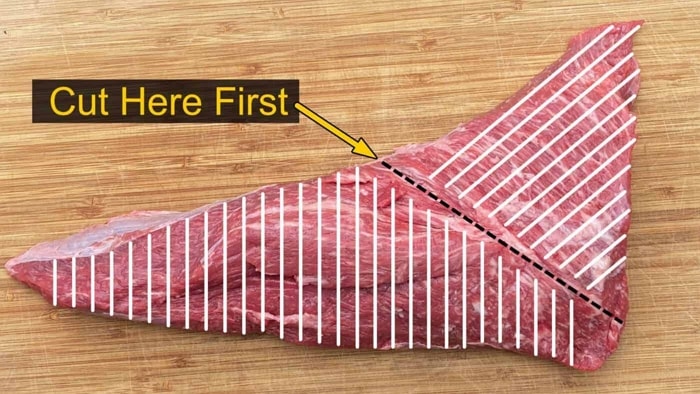
2. Keep an Eye on the tri-tip Internal Temp
Getting the tri tip’s internal temperature right is key to achieving that perfect doneness. That’s where the Typhur InstaProbe comes in handy. Place the thermometer into the thickest part of the meat to get an accurate temperature reading, carefully avoiding any bones. Now, here’s the magic temperature range for your ideal tri-tip:
Aim for a tri-tip internal temp is a medium rare tri-tip temp of around 135-140°F (57-60°C). This will give you a juicy and slightly pink center, which many people find the sweet spot for tri-tip perfection.
Remember to periodically check the tri-tip temperature as it cooks to avoid overcooking, and choose your preferred temperature display, whether it’s in Fahrenheit or Celsius.
3. Let It Rest
Don’t rush to slice it once your tri-tip reaches the desired temperature. Instead, let it rest for a few minutes. This waiting game allows the meat’s juices to redistribute, keeping every bite flavorful and moist. Cover your cooked tri-tip loosely with foil and wait 5-10 minutes before slicing into it.
Frequently Asked Questions
A 2-pound tri-tip will take about 20 to 25 minutes of total cooking time. The tri tip is ready when the tri tip internal temp reaches 130°F for medium rare tri tip temp. Let the roast rest on a cutting board for 10 to 20 minutes before slicing against the grain.
Tri-tip doesn’t need a long cook to become tender. A tri tip temp of 130-132°F will achieve tenderness in just 3-4 hours. Avoid cooking beyond medium rare tri tip temp for best results. Sear over charcoal and slice against the grain for optimal texture.
To prevent your tri-tip from drying out, let it rest for 5 to 10 minutes after cooking. This helps redistribute the juices, ensuring the tri tip temp stays perfect. Do not slice too soon, or the juices will run out, leaving the meat dry.
Flip and baste your tri-tip every 4 minutes. Continue this until the tri tip internal temp reaches the desired level. You’ll know it’s done when the center is reddish-pink and juicy, with the perfect tri tip medium temp.
Wrapping It Up
In the world of cooking, getting your tri-tip right is something other than rocket science, but it requires some know-how. With a few straightforward steps and the help of the Typhur InstaProbe, you can master the art of cooking tri-tip to perfection.
There’s the crucial step of monitoring the internal temperature. The Typhur InstaProbe makes this a piece of cake. Stick it into the thickest part of the meat, avoiding bones, and let it work magic.
You aim to hit that sweet spot of 135-140°F (57-60°C) for a medium rare tri-tip. Whether you prefer to think of rare, medium rare, or medium, this trusty thermometer has got you covered.
Most importantly, take your time at the dinner table. Give your perfectly cooked tri-tip a little time to rest. Cover it loosely with foil and wait about 5-10 minutes. This step ensures that every bite stays flavorful and moist.
It’s all about nailing these three simple steps: proper cutting, temperature tracking, and resting. The Typhur InstaProbe is your kitchen ally, helping you achieve the ideal tri-tip temp for medium rare tri-tip or your preferred tri-tip temperature. This winning combo will make your tri-tip a hit at any meal. Enjoy!




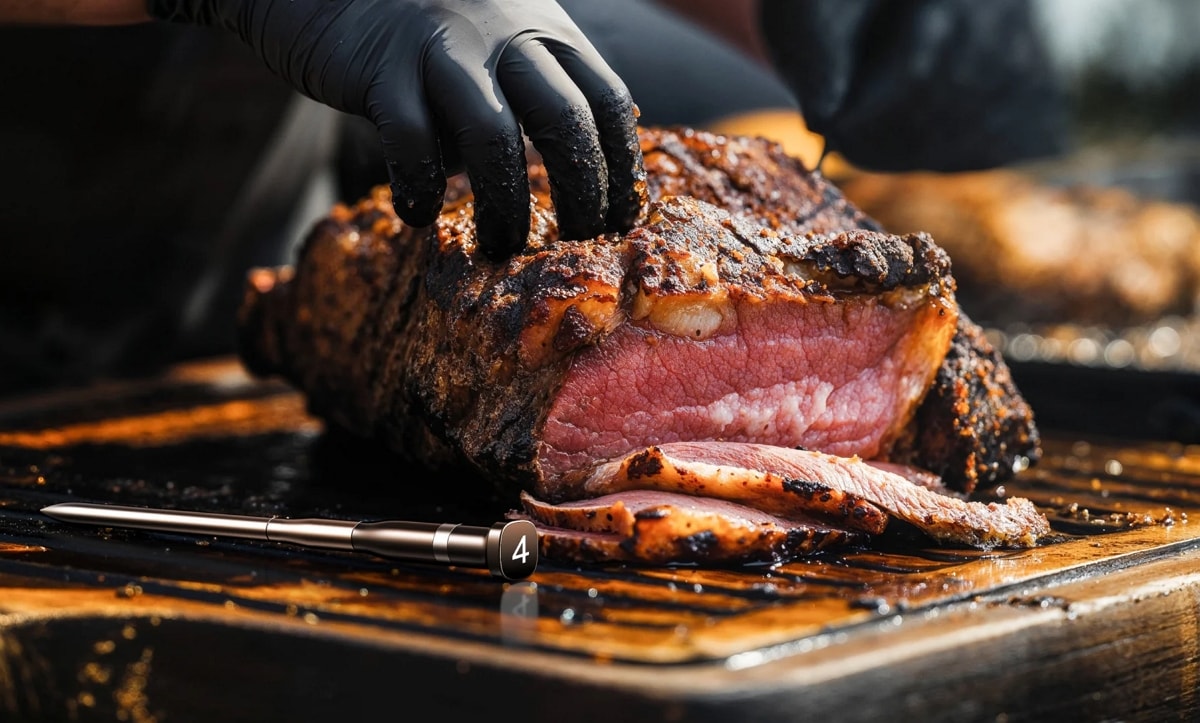
Wow how to sell a probe should be the name of this one…